In case you missed it, you’ll find the first part of this London Ontario Public Sculpture series here.
These pieces were commissioned by and are in front of the courthouse here in London. They’re called Xabis and are by Walter Redinger (Canadian) who created them out of fibreglass in 1974 for the opening of the courthouse. They were meant to be right on the ground but people kept sitting on them and fibreflass is too fragile for that. They were named Xabis after a lost city in Yemen that had been discovered in the 1970s due to climate change.
The pieces are meant to be totemic and representational of humans. They originally were painted green and flesh toned and the wrinkles in them are symbolic of human bodies. They started fading and the city chose to repaint them white instead. Since they had been intended to sit right on the ground rather than on concrete pillars, the idea was that you were to walk through it like a forest.
This is known around town as “the gut”. It is outside the federal building and is owned by them. It was made by Ed Zelenak in 1969 and is properly titled Convolution. He says that this work was based on a piece of string.
This was another piece commissioned by the courthouse in 1974 when it opened. It was created by Gino Lorcini, an artist who previously has had works at the Thielsen Gallery but who has now moved away from sculpture into photography. It’s called Themes (goddess of justice) and was made from bridge steel. Lorcini was a minimalist and he wanted in this piece to mirror the lines and materials used in city buildings but at the same time to create a bit of contrast to it by allowing the piece to rust and discolour over time. He used some very precise mathematical calculations in order to create this with the pieces that appear to be sliding off the rest of it.
Ahhh, now on to one of the most controversial pieces of public art in the city…the metal trees that are scattered throughout the downtown area. Anytime the subject of art in the city comes up, these trees always seem to enter into the conversation. Indeed, when we stopped to look at these trees on our tour, the first thing our guide did was to ask us what we thought whenever we saw them. So let me ask you….what do YOU think of our metal trees?
Why are these controversial? Well, there are a few reasons. The first one is that London, Ontario’s nickname is The Forest City. When I first came to London as a child there were trees pretty much EVERYWHERE (except in the neighbourhood we moved into – it was the newest subdivision and there were pretty much NO trees there at all). Then, more and more new subdivisions were built and more and more trees were cleared. Don’t get me wrong – we have some gorgeous parks and some lovely old tree lined streets but as with many growing cities, we have lost quite a number of trees. I remember as a kid that the city even came around to our neighbourhood and planted a tree in front of each and every house in order to meet the rising concern over the lack of trees in the Forest City. This has been an ongoing concern for the city and when met with the appearance of metal trees, a large number of citizens were dismayed that there hadn’t been a planting of real trees instead. In addition, the trees were originally purchased by Spriett and Associates and then by the Downtown London Business Owners’ Association in cooperation with the city. A further reason for the controversy over these trees is that they were installed without any public hearings on the matter so the basic citizen of the city had no input.
The trees are created by Bill Hodgson. Each one has his name, the species of tree, and the date each was made right on it – unusual for public art as it is often left unlabelled or that information is contained on a plaque somewhere. The idea behind the trees was that they were meant to be bare metal, not painted. There were supposed to be 100 of them rather than 32 as Hodgson envisioned them creating something of a forest downtown. They were meant to be installed on street corners where real trees were not feasible (although this is an item in contention as there are some businesses downtown such as the John Labatt Centre where trees have been planted along the sidewalk). Hodgson also intended for each tree to be a bit of a botany lesson in its creation as he exaggerated the characteristics of each one so as to bring understanding of the tree to the public.
The final issue of contention for these trees is one of responsibility. They were/are paid for from the taxes of the London Downtown Association as they became the key players in spearheading the project for installing these trees but they are on public property. Furthermore, the artist would have been happy to help maintain them if they had been installed in their original form but now that they’ve been painted it makes it difficult for him to do so. The pieces are being vandalized (pieces being removed from the trees and taken home as souvenirs) and they are suffering from some wear and tear. If we are going to have these trees, it seems that an agreement should be reached as per an ongoing maintenance plan for them.
By the way, I’m still a bit on the fence about the trees. I thought they were horribly ugly and tacky when I first saw them and it always bothered me to see a metal tree painted in sometimes garish colours (I love pink but that pink when you see it in person is far too much like Pepto Bismol!) outside of gorgeous heritage buildings hundreds of years old. Perhaps now though they are beginning to grow on me and recently, I have found myself looking up at some of them and smiling. Not the Pepto Bismol pink one though. (Shudder)
This giant heron has me positively intrigued. I had NEVER noticed it before this tour but it’s quite striking. A new building in the downtown core, the Renaissance, has been put up (it’s luxury apartments) and a contest was held by the owners for someone to create some art for it. In London, as in with some other cities, it is mandated that when a new building is put up, 1% must be devoted to public art.
Ted Gooden, a local stained glass artist, won the contest and in 2009 he worked with the architects to create this piece as they wanted something that would tie right into the structure of the building. Gooden chose the great heron because it is a common bird in this part of Ontario and because the building is located so close to the river. He wanted the impression of the heron having just flown up out of the river and heading right past this building. The bird is 60 feet long and has a wingspan of 24 feet. Notice the stained glass medallion in its tail? In the picture to the right, you can see a similar medallion made of concrete that is part of the sidewalk. At the time of the summer solstice, the glass medallion and the sidewalk medallion actually line up and create a beautiful display of colour on the sidewalk. (Guess where I’ll be for the summer solstice?). There is another smaller medallion on the sidewalk that does the same thing at the time of the spring equinox.
This area, known as Jubilee Square, is just outside of the John Labatt Centre and was created by the architects to fulfill the requirement for public art. It is a bit different than some of the other public art though in that it was created by the architects and not by artists and was added to serve the purpose of crowd control, preventing cars from entering this area, and to add some simple geometric interest. There is also a teepee shaped water feature and mister as well as some blocks showing information about the history of London.
Here’s another functional piece. This gate closes and locks as an extra area of protection for Fodemesi Shoes. The artist who created this is Jerry Brabek, a Czech Canadian. Can you guess what it’s supposed to be? It’s actually an Elizabethan boot! Check out the bottom left hand corner of the gate and you should be able to see the heel of the boot there. The design was chosen in honour of the fact that Fodemesi created the footwear for some Shakespearean plays being presented at the Stratford Festival in Stratford, Ontario.
This area, right along the banks of the Thames River, is actual a splash pad for the kids (hence why the ground is wet). The mural/relief work at the back there depicts important scenes of London life and history.
The rest of the area was given architectural details and elements such as the lights, benches, and water features that reflect a theme of water and waves so that it would add visual interest that was also child friendly as seen above. These were put in by PMA Architects from Toronto as part of a 2009 Rejuvenating the Forks Initiative.
This piece, Communicating with the Forks, was made in 2003 by 3 Beal Secondary School art students and their teacher out of steel mesh, fibreglass, and stucco. It was supposed to be white but the city decided that it needed some splashes of colour to make it more “child friendly”. The idea behind it was that of that of the Native Canadians who would meet at the forks of the Thames to trade and talk and settle disputes. They were also playing off the phrase “speaking with a forked tongue”. The features on this relief sculpture were meant to be facial like in appearance and they are connected to symbolize that idea of communication.
Remember when I referred to the art museum itself as resembling a subway station? Well, I have since learned a bit more about its construction. You can’t entirely tell from this picture but take note of the curved roof there. That curve is repeated 6 times and apparently it, too, was meant to reflect a theme of water since it’s located right on the forks of the river. When it was first built it was a bright blue colour and apparently even had an indoor pond (I remember the blue colour – no one liked it! – but I don’t remember the pond). The pond had to be removed as the moisture it was giving off was detrimental to the artwork.
Well, that’s it for this art tour. I hope you enjoyed it. Stay tuned for another fun one coming up on my blog!
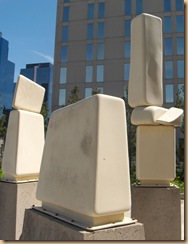
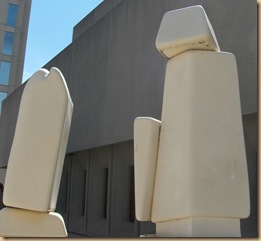
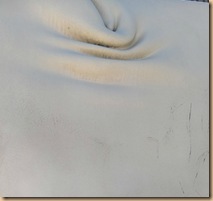
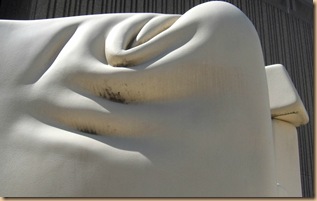
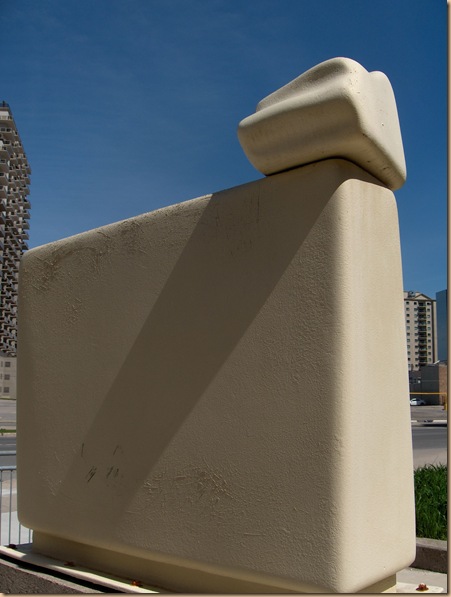
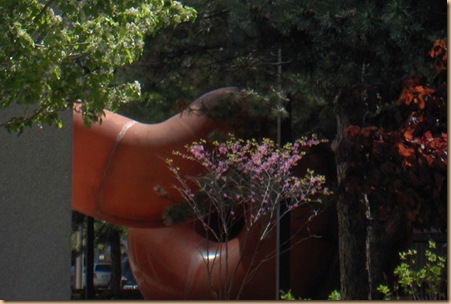
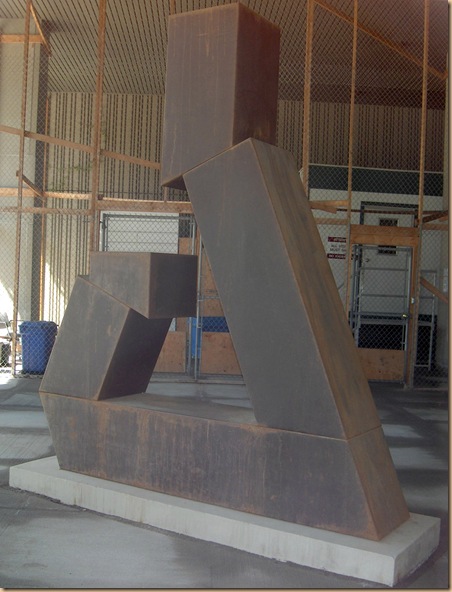
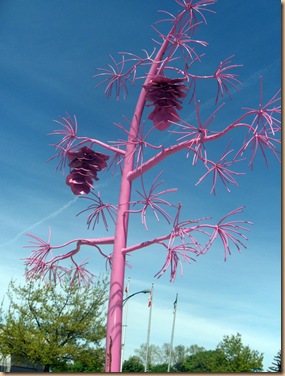
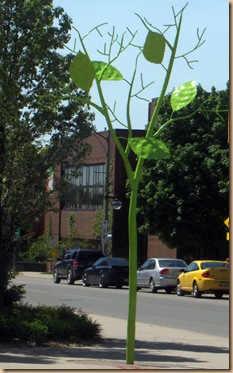
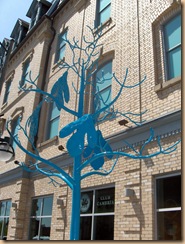
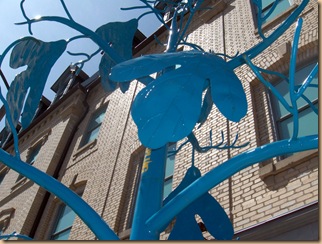

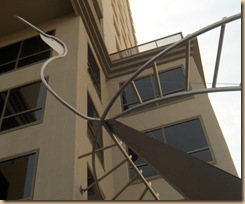
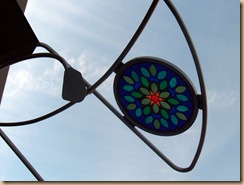
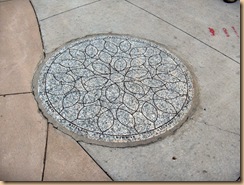
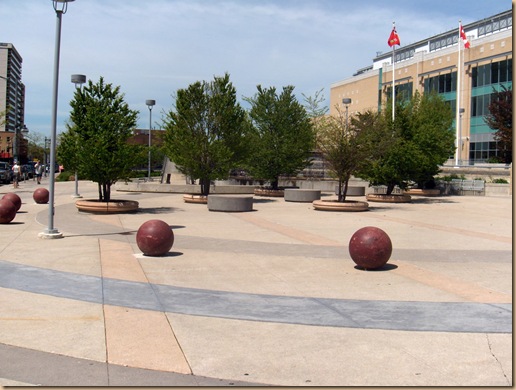

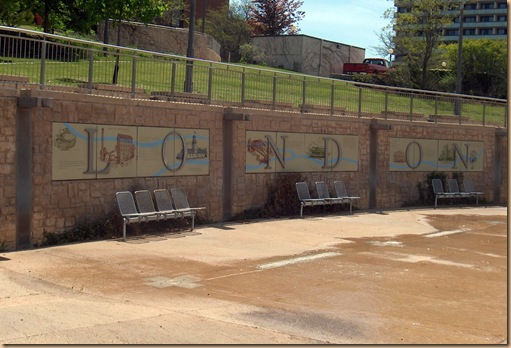
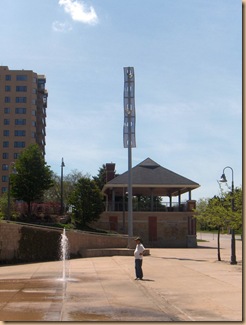
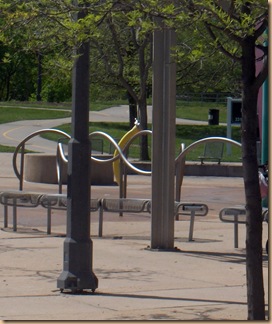


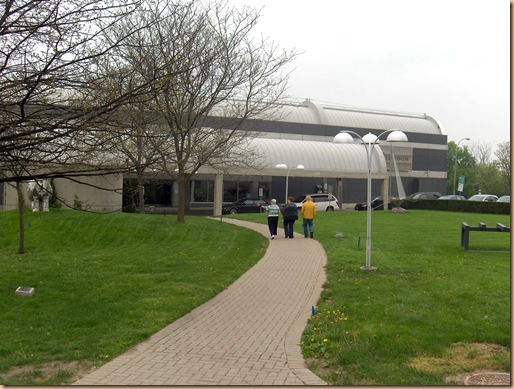
Roberta says
A most excellent article, Cyn and your photos are wonderful too. Thank you for letting us go on this tour with you.